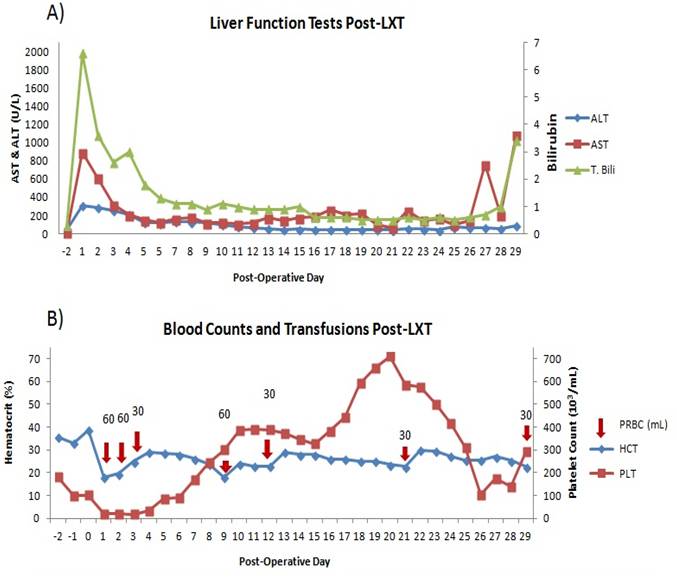Prolonged Survival with Co-Stimulatory Blockade Based Immunosuppression in Pig-to-Primate Liver Xenotransplantation.
Massachusetts General Hospital, Boston, MA
Meeting: 2017 American Transplant Congress
Abstract number: 476
Keywords: Liver transplantation, Pig, Primates, Xenotransplantation
Session Information
Session Name: Concurrent Session: Xenotransplant
Session Type: Concurrent Session
Date: Tuesday, May 2, 2017
Session Time: 2:30pm-4:00pm
 Presentation Time: 2:54pm-3:06pm
Presentation Time: 2:54pm-3:06pm
Location: E351
Background:
Since the first attempt in 1968, survival following pig-to-baboon liver xenotransplantation (LXT) has been limited to <9-days due to a lethal coagulopathy. To improve survival, we developed a pre-clinical model utilizing human coagulation factor administration and co-stimulatory blockade.
Methods:
Four consecutive orthotopic pig-to-baboon LXT were performed using α1,3-galactosyltransferase knockout donors. Post-LXT, baboons received a continuous infusion of human prothrombin concentrate complex. Immunosuppression consisted of anti-thymocyte globulin, FK-506, methylprednisone and belatacept (n=3) or anti-CD40 mAb (n=1).
Results:
Belatacept Recipients: Baboon #1 survived until POD25 when euthanasia was performed due to worsening cholestasis and plantar ulcers. Baboon anti-pig cytotoxic IgM (but no IgG) was detected on POD7 with resolution by POD14 after steroid pulse. Final pathology was C4d negative and without evidence of rejection, inflammation, and TMA. Baboon #2 suffered a seizure requiring euthanasia on POD5 but at that time had normal LFT's and normal pathology. Baboon #3- the only recipient of CMV positive donor xenograft- necessitated euthanasia by POD8 due to worsening LFT's. Post-mortem liver pathology was C4d positive, with hemorrhagic necrosis and CMV inclusions. Circulating baboon anti-pig cytotoxic IgM (but no IgG) was detected on POD8. Anti-CD40 Recipient: Baboon #4 maintained stable hepatic function until euthanasia on POD29 due to plantar ulcers and rising LFT's. (Figure 1) No circulating antibody was detected, and final pathology was C4d negative and without evidence of rejection, inflammation, and TMA.
Conclusions:
We report nearly one-month survival in two recipients following pig-to-baboon LXT- the longest reported to date. The benefit of anti-CD40 mAb in preventing the development of baboon anti-pig cytotoxic IgM warrants further investigation. These results are encouraging for potential clinical application of LXT as a bridge to allotransplantation for patients with acute hepatic failure.
CITATION INFORMATION: Shah J, Patel M, Elias N, Rosales I, Navarro-Alvarez N, Hertl M, Cosimi A, Colvin R, Markmann J, Sachs D, Vagefi P. Prolonged Survival with Co-Stimulatory Blockade Based Immunosuppression in Pig-to-Primate Liver Xenotransplantation. Am J Transplant. 2017;17 (suppl 3).
To cite this abstract in AMA style:
Shah J, Patel M, Elias N, Rosales I, Navarro-Alvarez N, Hertl M, Cosimi A, Colvin R, Markmann J, Sachs D, Vagefi P. Prolonged Survival with Co-Stimulatory Blockade Based Immunosuppression in Pig-to-Primate Liver Xenotransplantation. [abstract]. Am J Transplant. 2017; 17 (suppl 3). https://atcmeetingabstracts.com/abstract/prolonged-survival-with-co-stimulatory-blockade-based-immunosuppression-in-pig-to-primate-liver-xenotransplantation/. Accessed December 21, 2025.« Back to 2017 American Transplant Congress
